Wildflowers of the Adirondacks:
Rose Pogonia (Pogonia ophioglossoides)
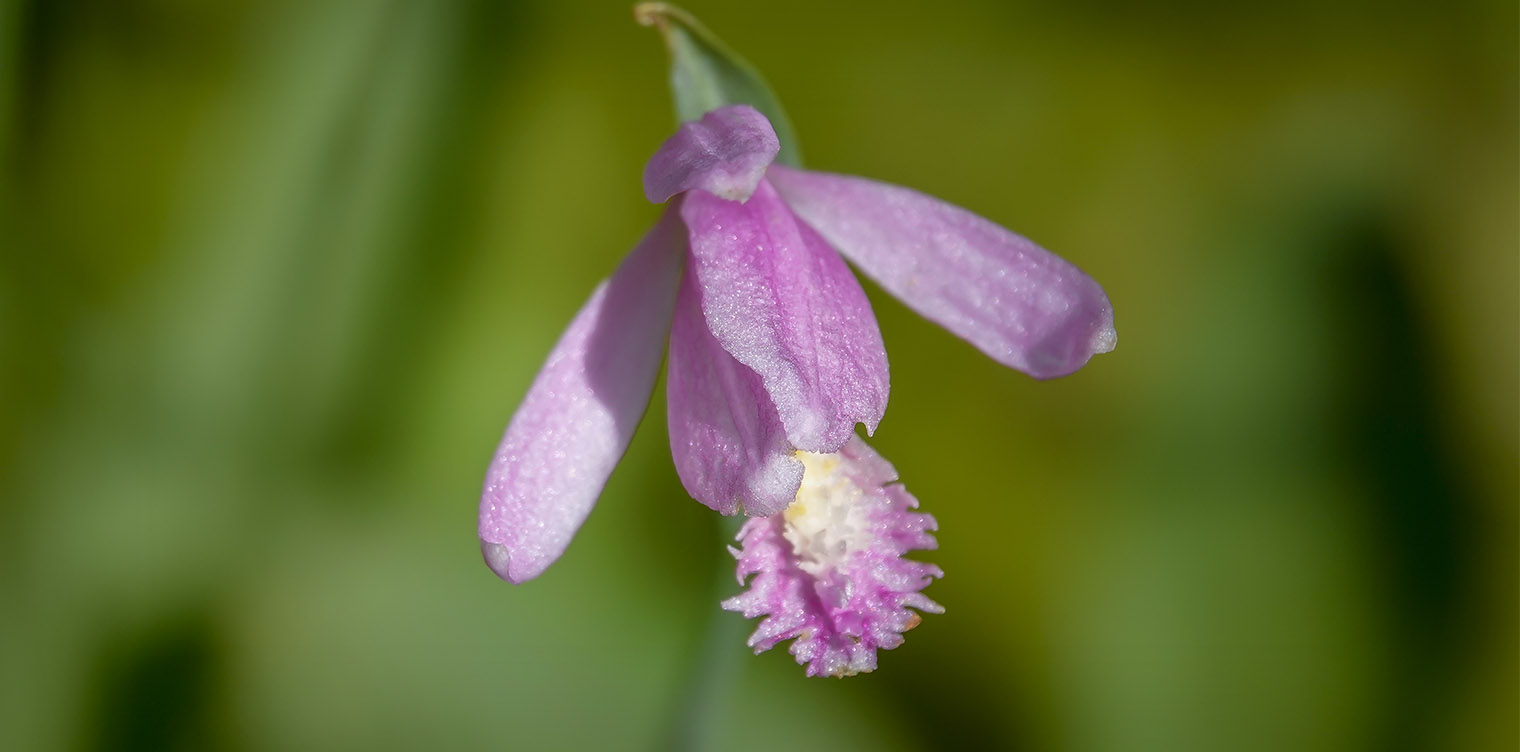
Rose Pogonia (Pogonia ophioglossoides) is a native orchid which produces pink flowers in summer. It grows in wetlands (particularly bogs) throughout the Adirondack Mountains. It is a member of the Orchid Family (Orchidaceae).
- The Latin name "Pogonia" means "beard," a reference to the bearded lip on the flower.
- The species name "Ophioglossoides" comes from the word "orphis" (meaning "snake"), "glassa" (meaning "tongue"), and "eidos" (meaning "like"): resembling an Ophioglossum (the Adder’s Tongue fern, whose leaf superficially resembles that of this orchid).
Other common names for Rose Pogonia include Rose Crest-lip, Beard Flower, Snake Mouth, Snakemouth Orchid, Snake-mouth Orchid, Adder's Mouth, Adder’s-mouth Pogonia, and Dragon’s-mouth. The latter names are a reference to the appearance of the flower. The plant is also called Sweet Pogonia, an apparent reference to the purported fragrance of the flower.
Identification of Rose Pogonia
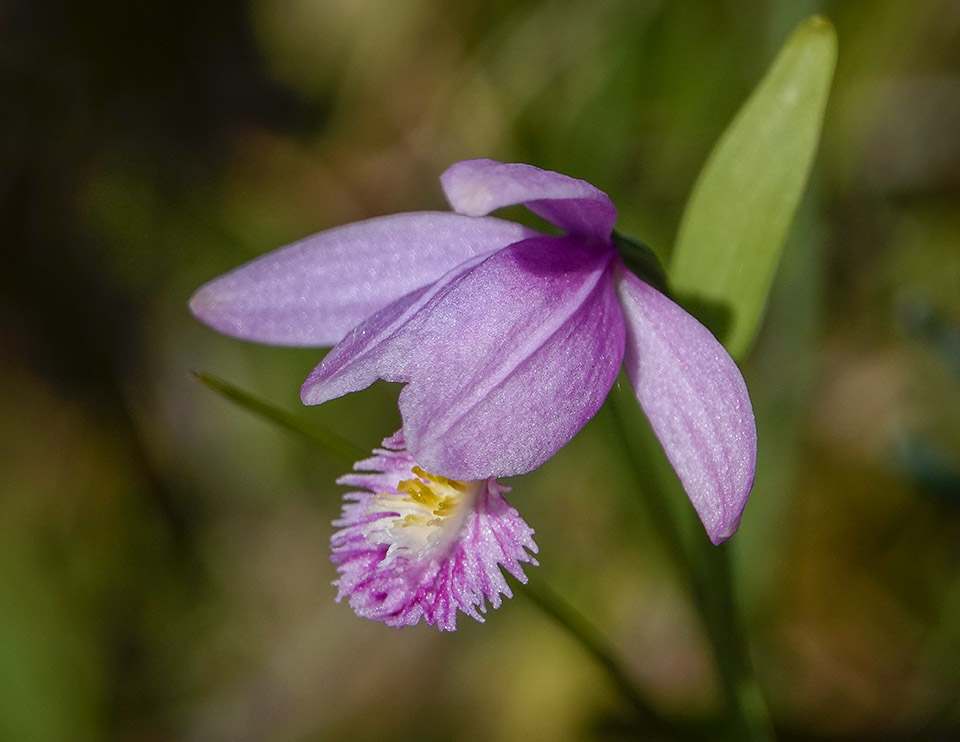
Rose Pogonia is an erect perennial plant with a single stem. Sources conflict on the hight of the plant (with descriptions varying from 4 inches to three feet), but most Rose Pogonias in our area seem to be about a foot or so tall. The slender stem is hairless and greenish, growing darker near the base.
Rose Pogonias usually have a single clasping simple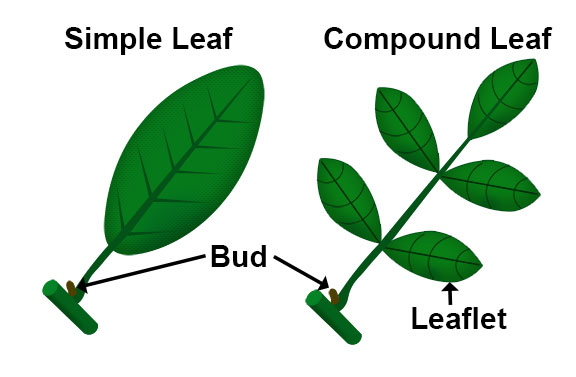 Simple Leaf: A leaf with a single undivided blade, as opposed to a compound leaf, which is one that is divided to the midrib, with distinct, expanded portions called leaflets. leaf half way up the stem. There might also be a long-stalked leaf near the base. The pointed leaf is up to about three or four inches long and ¾ to 1½ inch wide. The marginsThe structure of the leaf's edge.
of the leaf are smooth
Simple Leaf: A leaf with a single undivided blade, as opposed to a compound leaf, which is one that is divided to the midrib, with distinct, expanded portions called leaflets. leaf half way up the stem. There might also be a long-stalked leaf near the base. The pointed leaf is up to about three or four inches long and ¾ to 1½ inch wide. The marginsThe structure of the leaf's edge.
of the leaf are smooth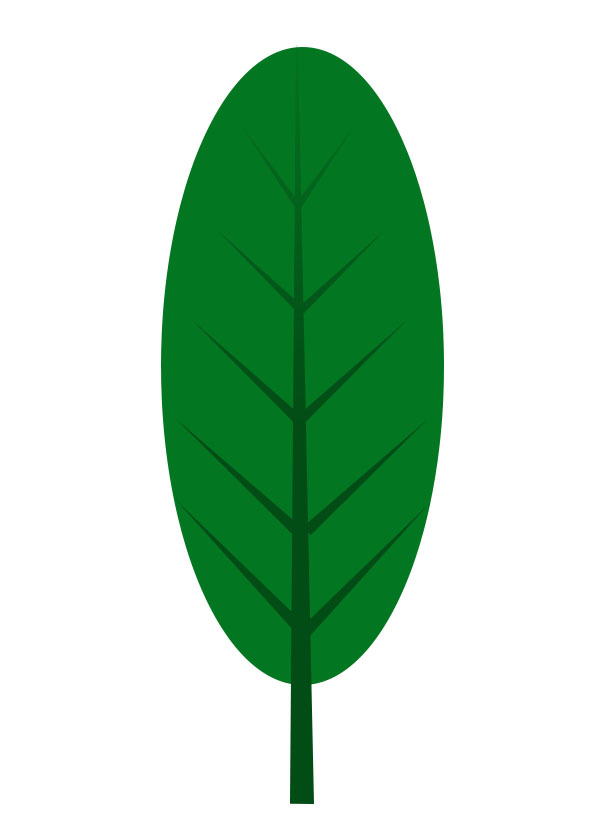 Smooth leaf edges do not have any teeth., meaning the leaf edges do not have teeth. There is also a leaf-like, stalkless bract which grows below the flower.
Smooth leaf edges do not have any teeth., meaning the leaf edges do not have teeth. There is also a leaf-like, stalkless bract which grows below the flower.
The Rose Pogonia usually has one vivid rosy pink flower, although pale pink to white specimens have been observed. The flowers vary in size, but are usually about an inch or so long. At the bottom of the flower is a lip, which has fringed edges, darker purple mottling, and three rows of white or yellow bristles, giving the flower a bearded look. Although Thoreau complained about the snake-like odor of the flower, he apparently was referred to withered flowers. The fresh flower reportedly has a sweet scent, similar to the odor of red raspberries or sweet violets.
Rose Pogonias generally bloom in the Adirondacks beginning in late June (in years when spring comes early) through mid- to late July. A tally of flowering dates for the upland Adirondack areas compiled by Michael Kudish, based on data collected from the early seventies to the early nineties, lists this plant as in flower between 13 July and 23 July. Most of the observations of this species on iNaturalist show bloom dates from late June to mid-July.
The fruit of Rose Pogonia is an erect capsule which points upwards or outward. It changes from green to tan or light brown and splits open to expose the tiny seeds.
Uses of Rose Pogonia
Neither edible nor medicinal uses for Rose Pogonia were found.
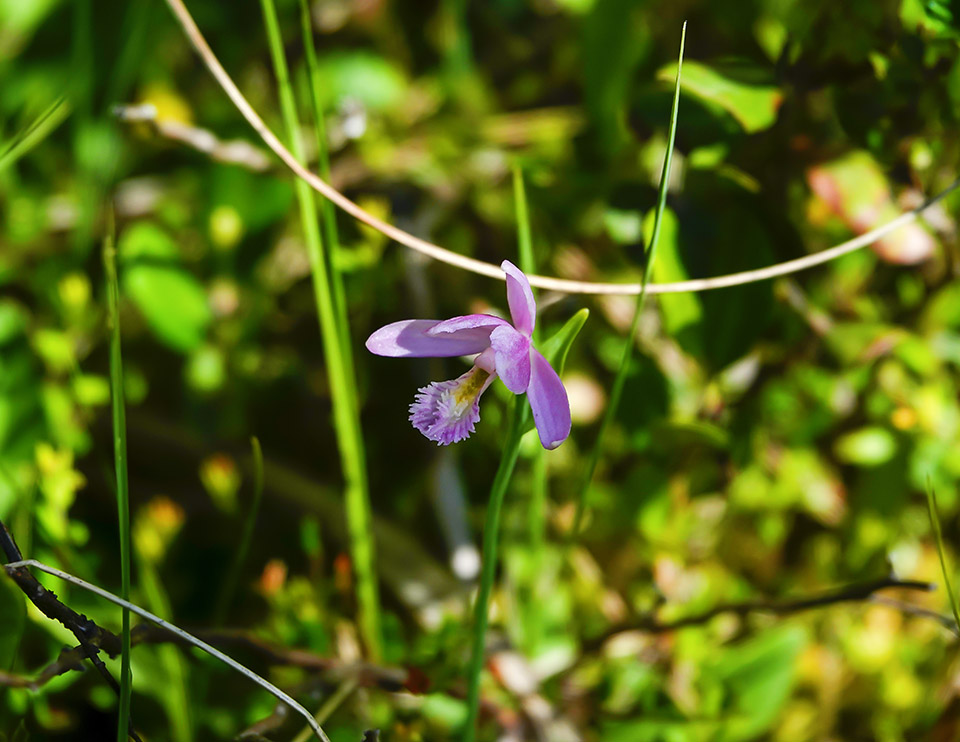
Wildlife Value of Rose Pogonia
Rose Pogonia has virtually no direct food or cover value for mammals or birds. The plant is pollinated main by bumblebees (Bombus), which suck small amounts of nectar from the fragrant flowers. Pollen is transferred when the bee puts its head deep inside the flower and brushes against the anther of the flower. The pollen is transferred from the bee's head to the stigma of the next flower it visits.
Distribution of Rose Pogonia
Rose Pogonia is found in the eastern half of the continental US and the southeastern provinces of Canada. Rose Pogonia is listed as Threatened in Arkansas, Florida, and Ohio, Endangered in Illinois, and Exploitably Vulnerable in New York State.
In New York State, there are vouchered plant specimens for Rose Pogonia covering over ¾ of the counties. The plant has been found in all counties within the Adirondack Park Blue Line, except for Clinton County.
Habitat of Rose Pogonia
Rose Pogonia is listed as an obligate wetland, meaning that it grows only in wetlands, usually in full sun. It may be found in sphagnum bogs, fens, wet meadows, roadside ditches, and acidic swamps in throughout the northeast. In the Adirondacks, Rose Pogonia is found in several ecological communities:
The most convenient place to view Rose Pogonia in our area is along the boardwalk through Barnum Bog on the Boreal Life Trail at the Paul Smith's College VIC. Look for Rose Pogonias blooming on sphagnum moss near White Fringed Orchids and Grass Pinks.
References
Michael Kudish. Adirondack Upland Flora: An Ecological Perspective (The Chauncy Press, 1992), p. 237.
Michael Kudish. Paul Smiths Flora II: Additional Vascular Plants; Bryophytes (Mosses and Liverworts); Soils and Vegetation; Local Forest History (Paul Smith's College, 1981), p 3.
New York Flora Association. New York Flora Atlas. Rose Pogonia. Pogonia ophioglossoides. Retrieved 13 April 2019.
United States Department of Agriculture. The Plants Database. Snakemouth Orchid. Pogonia ophioglossoides. Retrieved 12 November 2017.
Flora of North America. Pogonia ophioglossoides. Retrieved 12 November 2017.
NatureServe Explorer. Online Encyclopedia of Life. Rose Pogonia. Pogonia ophioglossoides - (L.). Retrieved 12 November 2017.
Native Plant Trust. Go Botany. Rose Pogonia. Pogonia ophioglossoides. Retrieved 10 July 2021.
North American Orchid Conservation Center. Rose Pogonia. Pogonia ophioglossoides. Retrieved 13 November 2017.
New York State. Department of Environmental Conservation. New York Natural Heritage Program. Ecological Communities of New York State. Second Edition (March 2014), pp. 58-59, 60, 60-61, 87. Retrieved 17 October 2015.
New York Natural Heritage Program. 2021. Online Conservation Guide for Inland Calcareous Lake Shore. Retrieved 10 July 2021.
New York Natural Heritage Program. 2021. Online Conservation Guide for Medium Fen. Retrieved 10 July 2021.
New York Natural Heritage Program. 2021. Online Conservation Guide for Rich Graminoid Fen. Retrieved 10 July 2021.
New York Natural Heritage Program. 2021. Online Conservation Guide for Riverside Ice Meadow. Retrieved 10 July 2021.
New York State. Adirondack Park Agency. Preliminary List of Species Native Within the Adirondack Park Listed Alphabetically by Scientific Name and Sorted by Habit. Volume 1. Updated 10.23.2006, p. 32. Retrieved 26 January 2017.
USA National Phenology Network. Nature’s Notebook. Pogonia ophioglossoides Retrieved 12 November 2017.
Connecticut Botanical Society. Rose Pogonia (Snakemouth Orchid). Retrieved 12 November 2017.
University of Wisconsin. Flora of Wisconsin. Pogonia ophioglossoides. Retrieved 12 November 2017.
Minnesota Wildflowers. Pogonia ophioglossoides (Rose Pogonia). Retrieved 12 November 2017.
Lady Bird Johnson Wildflower Center. Pogonia ophioglossoides. Retrieved 10 July 2021.
Online Encyclopedia of Life. Snakemouth Orchid. Pogonia ophioglossoides. Retrieved 12 November 2017.
iNaturalist. Rose Pogonia. Pogonia ophioglossoides. Retrieved 10 July 2021.
iNaturalist. Adirondack Park Observations. Rose Pogonia. Pogonia ophioglossoides. Retrieved 10 July 2021.
Anne McGrath. Wildflowers of the Adirondacks (EarthWords, 2000), p. 31, Plate 15.
Roger Tory Peterson and Margaret McKenny. A Field Guide to Wildflowers. Northeastern and North-central North America (Houghton Mifflin Company, 1968), pp. 214-215.
Doug Ladd. North Woods Wildflowers (Falcon Publishing, 2001), p. 90.
Lawrence Newcomb. Newcomb's Wildflower Guide (Little Brown and Company, 1977), pp. 38-39.
Charles W. Johnson. Bogs of the Northeast (University Press of New England, 1985), pp. 34-35, 126,130-131.
Meiyin Wu & Dennis Kalma. Wetland Plants of the Adirondacks: Herbaceous Plants and Aquatic Plants (Trafford Publishing, 2011), p. 103.
Donald D. Cox. A Naturalist's Guide to Wetland Plants. An Ecology for Eastern North America (Syracuse University Press, 2002), pp. 60, 89.
William K. Chapman. Orchids of the Northeast: A Field Guide (Syracuse University Press, 1997), pp. 44-46.
Paul Martin Brown. Wild Orchids of the Northeastern United States. A Field Guide (Cornell University Press, 1997), pp. 172-173, Plates 162-164..
David M. Brandenburg. Field Guide to Wildflowers of North America (Sterling Publishing Company, Inc., 2010), p. 376.
Timothy Coffey. The History and Folklore of North American Wildflowers (FactsOnFile, 1993), pp. 330.
Wilbur H. Duncan and Marion B. Duncan. Wildflowers of the Eastern United States (The University of Georgia Press, 1999), p. 177, Plate 619.
National Audubon Society. Field Guide to North American Wildflowers. Eastern Region. (Alfred A. Knopf, 2001), p. 664, Plate 470.
William K. Chapman et al, Wildflowers of New York in Color (Syracuse University Press, 1998), pp. 68-69.
John Eastman. The Book of Swamp and Bog: Trees, Shrubs, and Wildflowers of Eastern Freshwater Wetlands (Stackpole Books, 1995), pp. 137-141.
